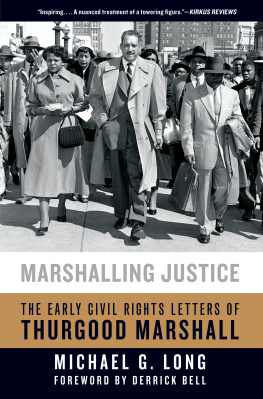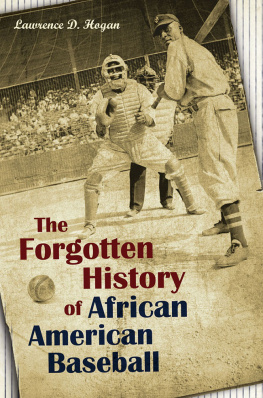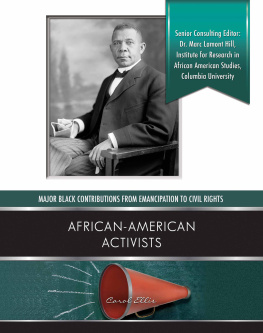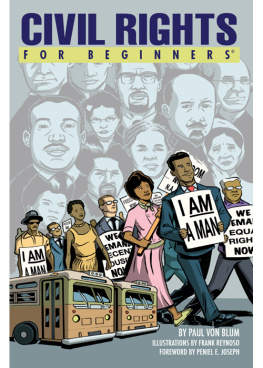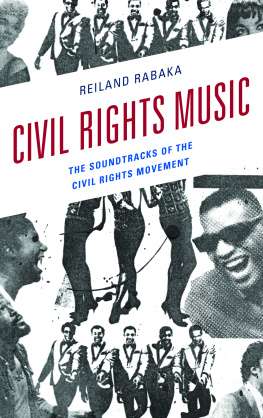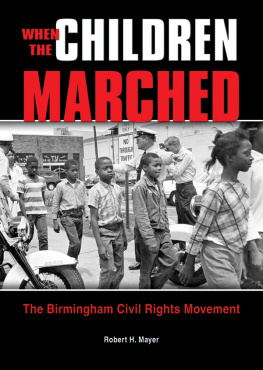Red Activists and Black Freedom
This book deals with the forgotten history of the civil rights movement. The American Left played a significant part in the origins of that movement, whose history has traditionally been focused on the later 1940s and early 1950s. This approach needs serious re-thinking in light of what took place in the later 1930s with the organization and activity of groups like the Southern Negro Youth Congress that brought both African-American and white workers and students together in the fight for economic and social justice. Thanks to the post-World War II Red Scare such groups as well as Left African-American leaders like Esther and James Jackson have been overlooked or excised from an exciting, controversial, and important story. With all due credit to the churches which played such a pivotal role in finally winning Blacks their civil rights, the early history involving the Left, workers of both races, and the labor unions must be assimilated into Americas memory, for there were important continuities between what they did and the later church-based struggle.
This book was published as a special issue of American Communist History.
David Levering Lewis is a Pulitzer Prize winning historian who is Julius Silver University Professor at New York University.
Michael H. Nash has been Director of the Tamiment Library and Robert F. Wagner Labor Archives at New York University since 2002. He holds a PhD in American History from SUNY Binghamton, and has served as Chief Curator, Library Collections at the Hagley Museum and Library (Wilmington, DE).
Daniel J. Leab is Professor of History at Seton Hall University, and founding editor of American Communist History. His most recent book is Orwell Subverted: the CIA and the filming of Animal Farm (2007).
Red Activists and Black Freedom
James and Esther Jackson and the Long Civil Rights Revolution
Edited by David Levering Lewis, Michael H. Nash and Daniel J. Leab
First published 2010 by Routledge
2 Park Square, Milton Park, Abingdon, Oxon, OX14 4RN
Simultaneously published in the USA and Canada
by Routledge
711 Third Avenue, New York, NY 10017
Routledge is an imprint of the Taylor & Francis Group, an informa business
2010 Historians of American Communism
First issued in paperback in 2012
All rights reserved. No part of this book may be reprinted or reproduced or utilised in any form or by any electronic, mechanical, or other means, now known or hereafter invented, including photocopying and recording, or in any information storage or retrieval system, without permission in writing from the publishers.
British Library Cataloguing in Publication Data
A catalogue record for this book is available from the British Library
ISBN13: 978-0-415-47255-5 (hbk)
ISBN13: 978-0-415-63742-8 (pbk)
Contents
Daniel J. Leab |
Michael H. Nash |
David Levering Lewis |
Robin D. G. Kelley |
David Levering Lewis |
Johnetta Richards |
Erik S. McDuffie |
Sara E. Rzeszutek |
Michael Nash and Daniel J. Leab |
Maurice Jackson |
Timothy Johnson |
Robert Korstad |
Michael Anderson |
Angela Davis |
Michael Anderson is a former editor at the New York Times. He is completing a biography of Lorraine Hansberry.
Angela Davis is Professor Emeritus at the University of California at Santa Cruz. She is the author of Blues Legacies and Black Feminism.
Erik S. McDuffie is an Assistant Professor in Africana Studies and in the Gender and Women Studies Program at the University of Illinois at Urbana. His book Toward a Brighter Dawn: Black Women and American Communism, 19301956 is forthcoming.
Maurice Jackson is an Assistant Professor in the Department of History at Georgetown University, and is the author of Let this Voice be Heard: Anthony Benezet and Atlantic Abolition.
Timothy Johnson is the Africana Studies Librarian at New York University.
Robin D. G. Kelley is Professor of American Studies and Ethnicity at the University of Southern California. His most recent book is Freedom Dreams: The Black Radical Imagination. Professor Kelley is also the author of Race Rebels: Culture, Politics, and the Black Working Class.
Robert Korstad is an Associate Professor of Public Policy and History at Duke University. His publications include Civil Rights Unionism: Tobacco Workers and the Struggle for Democracy in the Mid-Twentieth Century South.
Daniel J. Leab is a Professor of History at Seton Hall University and editor of American Communist History. His most recent book is Orwell Subverted: the CIA and the Filming of Animal Farm, Penn State Press, 2008.
David Levering Lewis is the Julius Silver Professor of History at New York University. The first volume of his Du Bois biography W.E.B. Du Bois: Biography of a Race, 18681919 won the Bancroft and Pulitzer prizes. Volume 2 W.E.B. Du Bois: The Fight for Equality and the American Century, 19191963 won the Pulitzer Prize for biography.
Michael H. Nash is the Director of the Tamiment Library at New York University. His publications include Conflict and Accommodation: Coal Miners, Steel Workers, and Socialism.
Johnetta Richards is an Associate Professor of Africana Studies at San Francisco State University. Her essay in this volume draws on her doctoral dissertation The Southern Negro Youth Congress: A History, 19371949.
Sara E. Rzeszutek received her Ph.D. in U.S. and African American History from Rutgers University. Her dissertation Love and Activism: James and Esther Cooper Jackson and the Black Freedom Movement in the United States, 19141968 focuses on the intersection between personal and political life during the Black Freedom Movement and the Cold War.
Daniel J. Leab
There is no need to justify publication of these essays dealing with Esther and James Jackson, and their involvement and that of other Communists in the runup to the Second Reconstruction. They all deserve to be remembered for their gallant often lonely battles against the racism and economic inequities which pervaded the United States during the heyday of their activities. What they and their allies accomplished as well as their influence and impact should not be forgotten. Their chosen vehicles, the Communist Party of the USA (CPUSA) and its allied organizations, reflect the Partys high-profile campaign on behalf of the exploited of all colors.
Certainly for many of these years, indeed from the onset of the Depression in 1929 to the period immediately after the end of World War II the Communists and their allies were the most outspoken challengers of the racist status quo, especially in the Deep South. Because of their policy of mass protests and the noise surrounding them (drowning out less public and much less dramatic legal maneuvers, sometimes characterized as armchair activism) African-Americans knew about the efforts of the Reds to aid Black people.1



